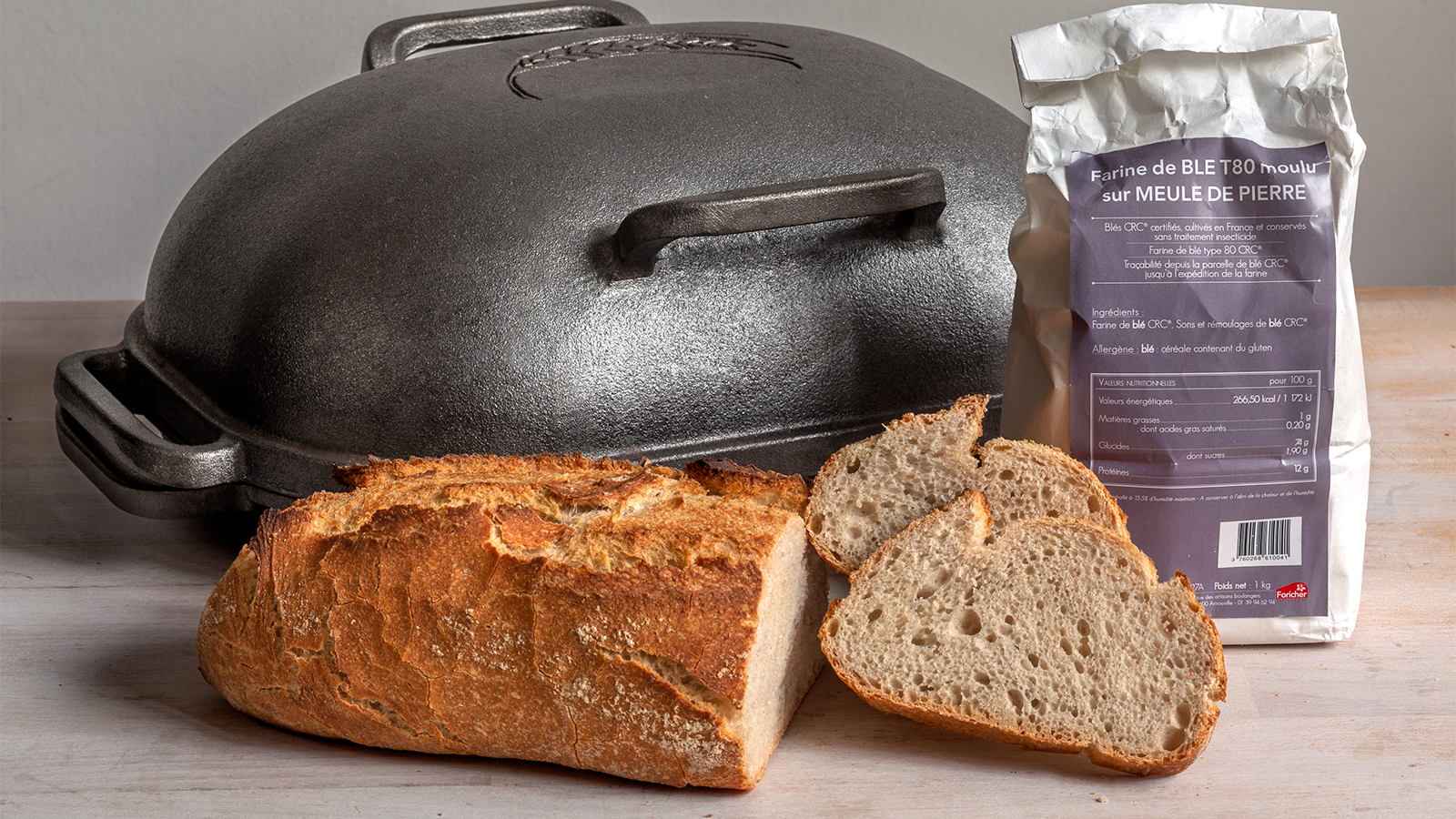Having blisters on your crispy crust on your bread that cracks when you squeeze it is so satisfying you'll just want to slice it up and devour the whole lot.
I have tried a few different methods and found that there are a few simple tips that will help you obtain a nice crackly crust.
Create tension in your dough with the final shaping before placing it into your banneton or baking tin.
Do this by pre-shaping your proofed dough into neat balls of dough and leaving it on the worktop for half an hour before final shaping using your chosen method, making sure the surface of the dough is nice and taught. This gives a smooth springy outer skin that will be more susceptible to blistering as the dough bakes.
Heat the oven up hot hot hot!
Preheating your oven to a higher temperature than you need to bake at, and then turning down the temperature to your desired baking temperature makes sure you don’t lose too much of the heat from opening the oven door when putting the dough in the oven.
If the recipe says 210°C then heat the oven to 230°C then turn back to 210°C when the dough has started baking. The crust starts forming when the proteins and natural sugars in the dough meet high temperatures, so if your dough has to wait for the oven to get up to temperature again then the crust won't start forming straight away and will dry out which does not allow for blisters.
The more metalwork you have in the oven the longer time you will have to leave it before baking. I have a baking steel and a challenger so therefore I leave half an hour after the oven says it is at the correct temperature, before I start actually baking. This will vary depending on your oven, what setting the oven is on (if it is fan or convection etc..) and on how much material you have to heat up. The Netherton Foundry spun iron cloche design that we have made exclusively for BakeryBits will bring that time down as it has less material to heat up.
Cool down your dough before baking.
Popping your banneton in the freezer half an hour before baking helps by creating a more solid skin on your dough which will not only help release it from your banneton and make it easier to slash but will also help with the next tip.
Wet your dough before baking.
Lightly spray your dough with water using a spray bottle just before it goes into the oven, I do this after slashing as I want the dough to be wet as it enters the oven. I have found that the colder the dough the easier it is to load the surface with fine drops of water.
Create some steam.
Finally creating steam in the oven is crucial as I mentioned earlier, the crust will dry out without steam and you want the loaf to expand and caramelize as much as possible for the first part of the baking time.
A DeSh~Stoom oven steamer is great for creating steam straight away when baking and not using a dome. Your oven mustn't be filled with steam during the whole bake as you want those blisters to dry out and get crispy, this is why the DeSh~Stoom stops producing steam after a while allowing your loaf to crisp up.
If you are using a dome like the Challenger bread pan or the Netherton then all you need to do is add an ice cube after you have placed your dough inside and then quickly put the lid on to encapsulate the steam inside, this gives fantastic results, just make sure to use a good pair of oven gloves to avoid getting any burns from the steam whilst putting the lid on.
Using these tips, you should be able to get some blisteringly good bakes.
Happy baking.




















